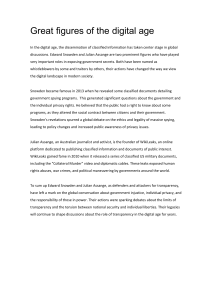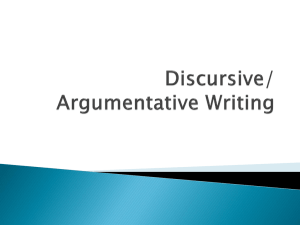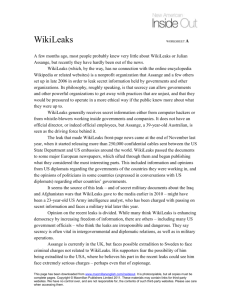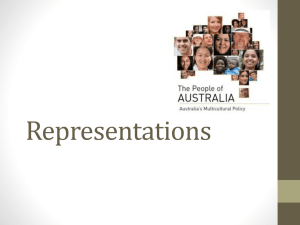Who is Julian Assange?
advertisement
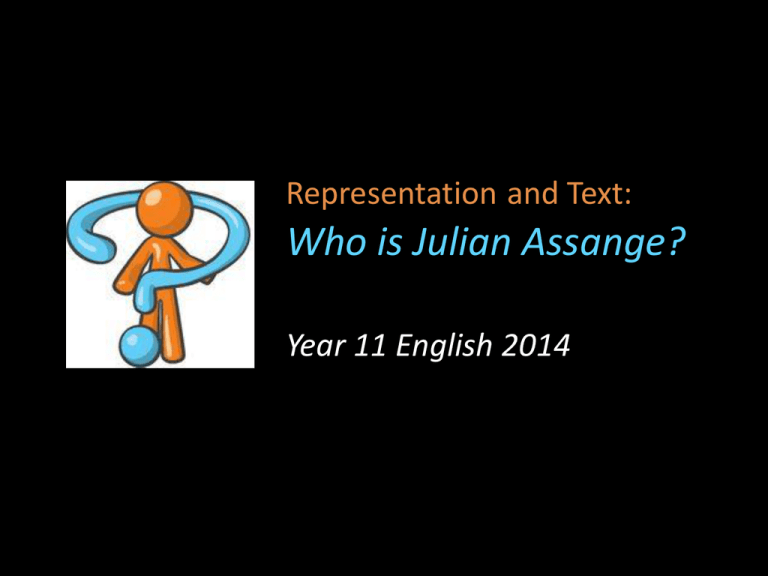
Representation and Text: Who is Julian Assange? Year 11 English 2014 2010 2010 2011 So many perspectives … 2011 2014 Representation and Text • HSC Module C – Central person or event – Multiple representations • Discover: – Why people’s opinions vary – different ways of viewing the same thing – How composers shape texts according to their views. 1. 2. 3. 4. 5. What is bias? What are the characteristics of a biased text? Can a composer have no bias? Is there such a thing as an unbiased text? If that’s the case, how can we find out what is true? 6. Is bias ‘bad’? 7. What should our aim be as readers if we are looking for truth in a world full of biased texts? Representation and Text: Who is Julian Assange? This unit is a steppingstone to the HSC Advanced Module C course. It requires you to explore and evaluate representations of journalist Julian Assange and the politics surrounding Wikileaks. Representation and Text: Who is Julian Assange? You will evaluate these things influence meaning: • medium of production • textual form • Perspective • choice of language influence meaning. Representation Representation and and Text: Text: Who Whois isJulian JulianAssange? Assange? Prescribed text: 2013 documentary We Steal Secrets. Representation and Text: Who is Julian Assange? Related texts of your own choosing: – Tweets – Blogs – Images: photographs, cartoons, wallpapers – Feature articles and commentary texts – Recorded interviews – Websites – Biographies – Films Representation and Text: Who is Julian Assange? • You will analyse representations of: – Assange’s political motivations and actions – the impact Wikileaks’ political acts may have on individual lives or society more broadly. What materials do you need? • No texts or text book. • Section in lever arch folder or dedicated plastic folder • Internet connection on a device • Exercise book/lined paper Ready for a warm-up game? Line Debate OMG! I can’t wait to debate. I’m not just full of hot air, you know. Look out, Balloon Boy. I’m gonna rebut you like a boss. I love debating big-time. Rules for a Line Debate • Whole class starts in two lines facing each other with teacher as chairperson. One line is ‘for’, other is ‘against’ the topic • Someone ‘for’ begins, speaking in support of topic. • For a valid point, the team chooses a member of the opposition to join them and also earns tally marks: – Relevant point – 1 tally mark – With evidence – 1 more tally mark – Summary/rebuttal – 1 more tally mark • Speaker ‘against’ goes next; the debate continues until teacher brings it to a close. • If a point is invalid or repeated, the speaker joins the other team. Should freedom of information be prized above all else in politics? Now write up a 1 page summary: • • • points for this statement points against this statement Your opinion
